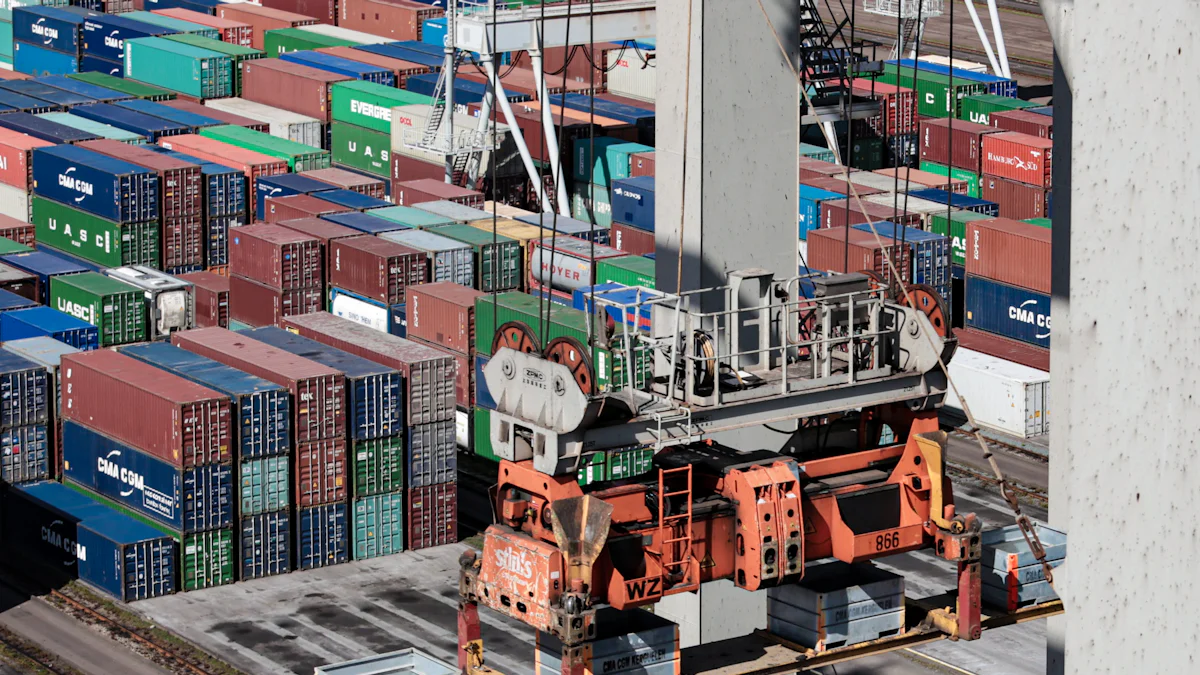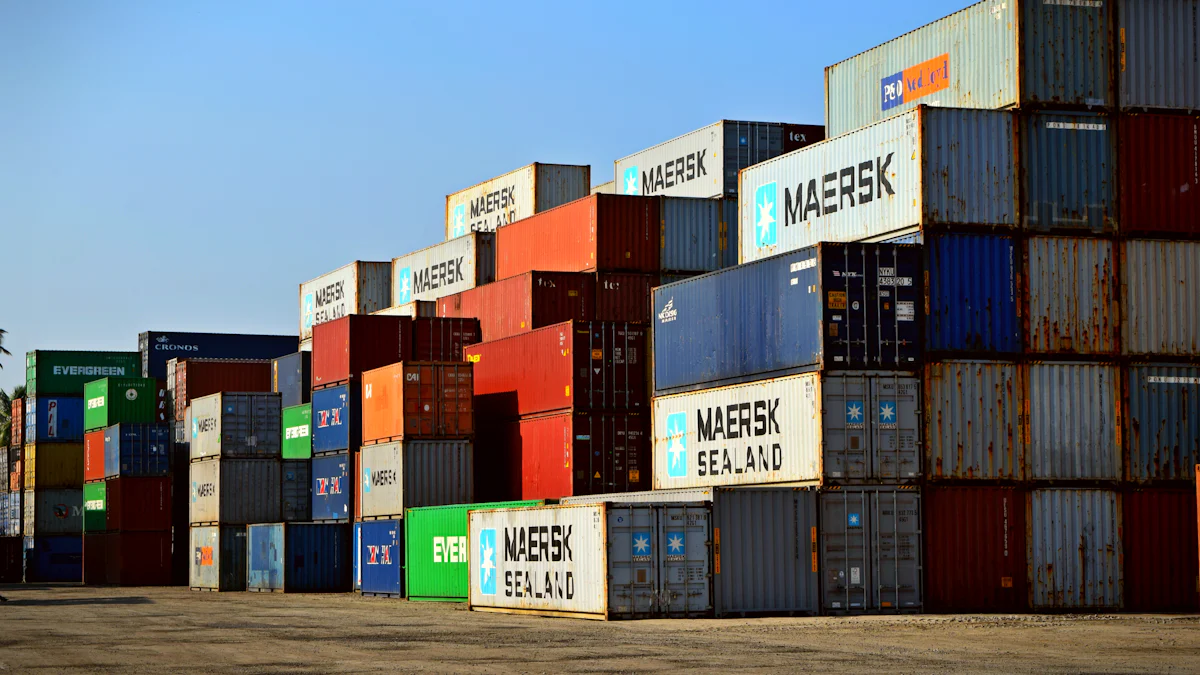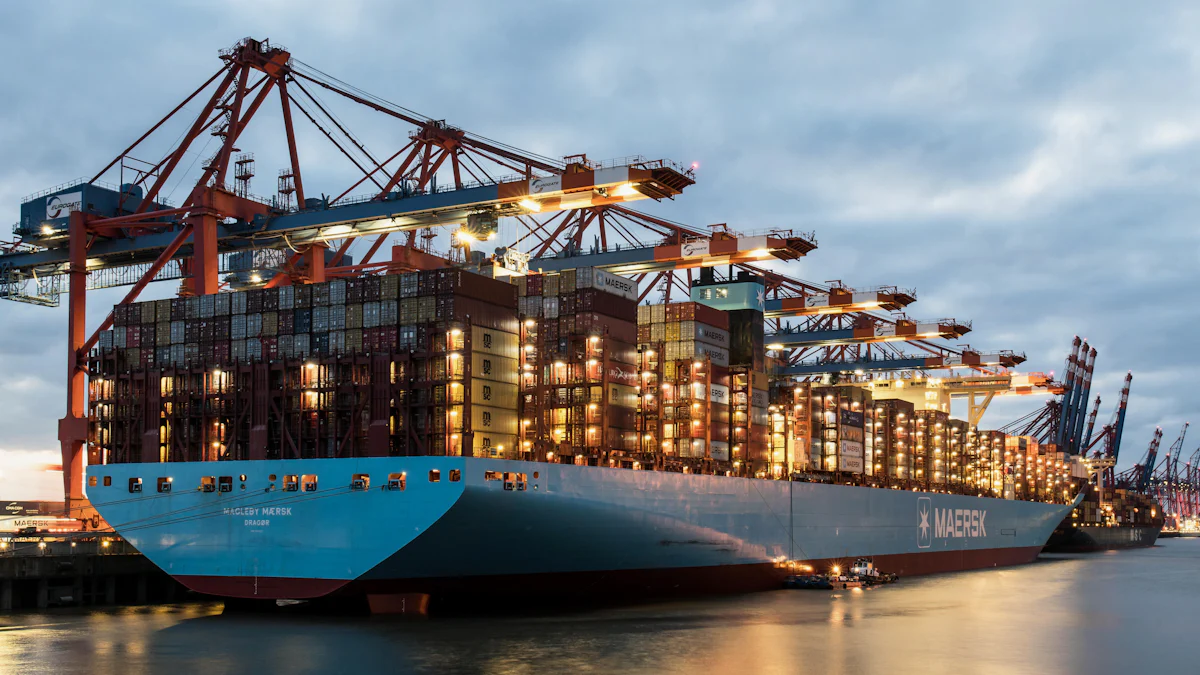Trends Shaping Ocean Shipping Costs in 2025

Ocean shipping costs in 2025 are projected to fluctuate between $20,000 and $30,000. Geopolitical tensions and shifting trade alliances will reshape the shipping market. Labor strikes and evolving trade policies will disrupt supply chains. Environmental regulations and technological advancements will further influence shipping costs, creating both challenges and opportunities for global trade.
Key Takeaways
Ocean shipping costs in 2025 are expected to fluctuate between $20,000 and $30,000 due to geopolitical tensions and changing trade policies, making it essential for businesses to stay informed and adaptable.
To mitigate risks from labor shortages and supply chain disruptions, companies should diversify their supply chains and explore alternative transportation options, ensuring resilience in volatile markets.
Investing in technology, such as advanced shipping software and real-time tracking, can enhance cost efficiency and improve decision-making, allowing businesses to navigate the complexities of the shipping landscape effectively.
Global Supply and Demand Dynamics in Ocean Shipping

Capacity Growth and Fleet Expansion
The global shipping industry is set to expand its capacity by 8% in 2025. This growth stems from the introduction of new vessels and fleet upgrades. However, the increase in capacity may outpace demand, which is only expected to rise by 3%. This imbalance could lead to overcapacity, creating inefficiencies in freight pricing. While the addition of new ships may alleviate congestion on key routes, it also poses risks. Overcapacity can disrupt market stability, forcing carriers to adjust their strategies to maintain profitability. The industry must carefully manage this growth to avoid rate volatility and ensure sustainable operations.
Demand Trends and Rate Volatility
Demand for ocean shipping services is projected to grow by 3% in 2025. Factors such as low consumer confidence and rising import tariffs are expected to constrain growth, particularly in the U.S. market. Despite this modest increase, the disparity between supply and demand dynamics will likely result in fluctuating rates. Historical trends suggest that rates tend to spike during peak seasons, especially on major routes like Asia to Europe and Asia to the United States. Labor disruptions and geopolitical tensions may further exacerbate rate volatility, making it crucial for shippers to adopt flexible strategies to navigate these challenges.
Economic Factors Impacting Freight Rates
Economic indicators will play a significant role in shaping freight rates in 2025. Increased industrial production and housing starts are expected to drive demand for ocean freight services. Government infrastructure investments and demographic trends, such as millennials entering the housing market, will also contribute to higher freight activity. However, rising labor costs and compliance with environmental regulations will increase operational expenses for carriers. These factors, combined with global inflation trends, may lead to elevated shipping costs. Businesses must monitor these economic drivers closely to adapt their logistics budgets and maintain cost efficiency.
Geopolitical and Regulatory Impacts on Freight Rates
Trade Policies and Tariff Changes
Trade policies in 2025 will significantly influence ocean shipping costs. Tariffs and sanctions often disrupt supply chains by increasing costs and limiting market access. Recent policy changes, such as potential tariff hikes in the United States, could reshape global trade flows. For instance:
A 20% increase on all international imports into the U.S. may raise freight rates.
Proposed tariffs of up to 60% on Chinese imports could further strain shipping costs.
Universal tariffs of 10%-20% on imports and 25% on goods from Canada and Mexico may alter trade patterns.
These adjustments will likely drive up transportation expenses and force companies to diversify supply chains. Many businesses may explore nearshoring or reshoring options to mitigate risks, boosting demand for regional logistics solutions. Tariff-driven shifts in trade routes will also impact delivery timelines, underscoring the need for strategic planning.
Environmental Regulations and Decarbonization Efforts
Environmental regulations will play a pivotal role in shaping operational costs for shipping companies in 2025. The International Maritime Organization (IMO) has introduced stricter measures to reduce greenhouse gas emissions. These include the Carbon Intensity Indicator (CII) and MARPOL Annex VI, which require cleaner fuels and advanced technologies. Compliance with these regulations will increase operational expenses, as companies invest in upgrades to meet emission standards.
Decarbonization efforts will further amplify costs. For example:
Cost Impact | Percentage Increase |
|---|---|
10% to 300% | |
Inflation of product costs | 0.1% to 30% |
CO2 abatement costs | $130 to $1,000/ton |
These changes highlight the growing financial burden on the industry as it transitions to sustainable practices.
Geopolitical Tensions and Trade Route Disruptions
Geopolitical tensions will continue to disrupt trade routes in 2025, affecting ocean shipping. The ongoing war in Ukraine has already forced carriers to take longer routes, increasing transit times and costs. In the South China Sea, aggressive tactics by Chinese vessels threaten stability. Sanctions on Russia have impacted crude oil and LNG exports, further complicating global trade.
Key disruptions include:
The Red Sea crisis, which has led to rerouted shipping lanes.
The emergence of the UAE-Israel land corridor as an alternative trade route.
Labor unrest in the U.S., which could delay shipments and increase costs.
These tensions emphasize the importance of adaptability in navigating volatile trade environments. Companies must monitor geopolitical developments closely to mitigate risks and maintain supply chain efficiency.
Technological and Operational Innovations in Ocean Shipping

Automation and Digitalization in Logistics
Automation and digitalization are transforming logistics operations in 2025. Automated systems reduce labor costs by streamlining repetitive tasks, saving businesses significant expenses. For example, companies can save on wages averaging $852 per employee weekly. Automation also accelerates the movement of goods, ensuring timely deliveries and optimized inventory management. Centralized platforms improve coordination across logistics processes, enhancing communication and task management.
Digitalization further strengthens supply chain resilience. Tools like sensors and advanced analytics provide real-time visibility, enabling organizations to respond quickly to disruptions. Companies using digital dashboards are twice as likely to avoid supply chain problems. Additionally, real-time data analytics minimizes errors in freight classifications and improves decision-making. These advancements ensure better accuracy and efficiency in ocean freight operations.
Reshuffling of Shipping Alliances
The reshuffling of shipping alliances in 2025 introduces new opportunities and challenges. Carriers are offering improved transit times and greater diversity in services. First-call advantages at key ports, such as Hamburg and the UK, enhance competitiveness. However, repositioning vessels may cause early-stage issues, including delays in documentation processes like dangerous goods applications.
These changes require carriers to fine-tune partnerships to minimize disruptions. Businesses must adapt to potential delays and capitalize on the benefits of enhanced service offerings. The reshuffling highlights the dynamic nature of the shipping industry and its focus on meeting evolving market demands.
Adoption of Green Technologies and Alternative Fuels
The adoption of green technologies is reshaping ocean shipping. Clean energy innovations, such as electric propulsion, biofuels, and hydrogen fuel, reduce emissions and promote sustainability. By 2050, 50% of fuels in green corridors are expected to be e-ammonia, signaling a shift toward cleaner energy sources.
Alternative fuels like green methanol and ammonia offer promising solutions but come with challenges. For instance, ammonia emits almost no CO2 but requires costly infrastructure and safety measures. Hydrogen provides zero carbon emissions when produced renewably, yet its storage infrastructure remains expensive. Despite these hurdles, the transition to green technologies ensures long-term environmental and operational benefits for the shipping industry.
Challenges and Risks in the Ocean Freight Market
Labor Shortages and Workforce Challenges
Labor shortages remain a critical issue in the ocean freight market. The rate of job openings to hires has reached historic highs, reflecting longer times to fill positions. Many workers are voluntarily leaving their jobs, with the quit rate at peak levels. Small businesses in the U.S. report nearly half of their job openings remain unfilled. Additionally, the American Trucking Association highlights a growing shortage of truck drivers, which exacerbates delays in transporting goods to and from ports. Labor shortages at key ports further slow the unloading of ships, creating bottlenecks in the supply chain. Addressing these challenges requires improving pay and working conditions to attract and retain talent.
Evidence Type | Description |
|---|---|
Job Openings to Hires | Historic highs, indicating longer times to fill jobs. |
Quit Rate | Peak levels, showing voluntary job departures. |
Small Business Job Openings | Half remain unfilled in the U.S. |
Job Shortage | 5 million jobs short of pre-pandemic levels. |
Overcapacity and Rate Pressures
Overcapacity poses a significant challenge to freight pricing in 2025. New vessel orderbooks represent 27% of the global fleet, signaling a substantial increase in capacity. This influx of ships will likely create an oversupplied market, pressuring freight rates downward. Analysts predict these conditions will persist for three to four years, widening the gap between supply and demand. Rigorous capacity management becomes essential to prevent economically unviable rates. Without careful planning, carriers may struggle to maintain profitability, further destabilizing the ocean freight market.
Supply Chain Disruptions and Uncertainty
Supply chain disruptions continue to challenge the shipping industry. Strikes by dockworkers can halt operations, causing severe delays. Compliance with stricter emission standards requires significant investments, adding to operational costs. Shifting trade alliances and geopolitical tensions further complicate trade dynamics. Businesses can mitigate these risks by diversifying supplier bases and modifying inventory strategies. Investing in technologies like blockchain and AI enhances visibility and control, helping companies adapt to disruptions. Developing contingency plans also ensures preparedness for unforeseen challenges, safeguarding supply chain efficiency.
Actionable Strategies for Businesses to Navigate 2025
Leveraging JUSDA’s China-Europe Express Rail for Supply Chain Optimization
JUSDA’s China-Europe Express Rail offers businesses a reliable solution to optimize supply chains in 2025. This service bridges the gap between speed and cost, providing a faster alternative to ocean freight while remaining more affordable than air freight. With a transit time of 15-20 days, it ensures timely delivery of goods like electronics, clothing, and medical supplies. The rail network also minimizes risks associated with delays by leveraging JUSDA’s expertise in customs operations and intercontinental logistics. Expanding sea-rail intermodal solutions further enhances connectivity, making this service a strategic choice for companies navigating the complexities of global trade. Businesses can rely on this innovative solution to maintain efficiency and reduce costs amidst fluctuating ocean freight rate forecasts for 2025.
Diversifying Supply Chains to Mitigate Risks
Diversifying supply chains strengthens resilience against disruptions. Companies working with multiple carriers reduce vulnerabilities caused by labor strikes or capacity shortages. This approach ensures access to reliable options during market volatility. A diversified supply chain also allows businesses to reroute goods through unaffected ports during crises, maintaining consistent operations. This flexibility is essential for managing costs effectively and responding to seasonal demand. By adopting this strategy, businesses can safeguard operations and adapt to sudden changes in the shipping landscape, ensuring stability despite the challenges of the 2025 ocean freight market.
Embracing Technology for Cost Efficiency and Resilience
Technology plays a pivotal role in improving cost efficiency and resilience in shipping operations. Advanced shipping software automates freight booking processes, saving time and reducing errors. Real-time tracking provides visibility into shipments, enabling faster responses to disruptions. Digital freight marketplaces expand access to a broader network of carriers, offering competitive rates. Businesses leveraging data analysis gain insights into market trends and cost-saving opportunities. These tools enhance decision-making, improve communication with third parties, and provide better control over freight cost factors. By integrating technology, companies can navigate the complexities of the 2025 shipping market with greater efficiency and adaptability.

JUSDA Solutions
To provide you with professional solutions and quotations.
Ocean shipping costs in 2025 will reflect the influence of global trends, including geopolitical shifts, environmental regulations, and technological advancements. Businesses must adopt proactive strategies to navigate these complexities effectively.
Stay informed about trade policies and market dynamics to anticipate cost fluctuations.
Diversify carrier partnerships and explore alternative transportation modes for resilience.
Invest in sustainable solutions to align with regulatory demands and reduce environmental impact.
Leverage technology to optimize logistics and enhance supply chain visibility.
Strategic planning, combined with innovative solutions like JUSDA’s China-Europe Express Rail, will empower businesses to adapt and thrive in the evolving shipping landscape.
See Also
Exploring Five Key Trends For Supply Chain Efficiency
Discovering Innovations In Sea Freight Logistics For 2024
Understanding Current Trends In Logistics Risk Management
Analyzing Cost Optimization Strategies In Supply Chain Economics
